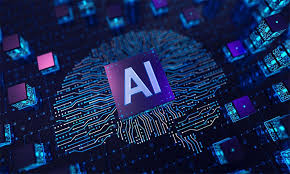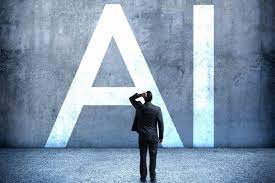
Artificial Intelligence (AI) has rapidly advanced from being a futuristic concept to becoming a part of our everyday lives. From virtual assistants and chatbots to automated factories and self-driving vehicles, AI is now performing tasks once thought to require human intelligence. This progress has led to a pressing question: Has AI technology reached a point where it can take away human jobs?

The answer is complex. While AI can replace certain tasks and roles, it also creates new opportunities. To understand this better, we must look at how AI affects different industries, the types of jobs most at risk, and how society can adapt.
How AI is Changing the Job Landscape
AI systems excel at tasks that involve processing large amounts of data, recognizing patterns, and performing repetitive actions with high accuracy. This makes them ideal for roles such as:
- Data analysis – AI can sort through massive datasets faster than any human.
- Customer service – Chatbots can answer simple customer queries 24/7.
- Manufacturing – Robots can assemble products with speed and precision.
- Transportation – Self-driving vehicles can operate without human drivers.
In many cases, AI doesn’t just work faster — it also works without fatigue, mistakes, or the need for breaks. This efficiency is attractive to businesses seeking to cut costs.
Jobs at High Risk of Automation
While AI may not replace every job, it poses a higher risk to certain types of work:
- Repetitive Manual Jobs
Factory workers, assembly line operators, and warehouse staff may be replaced by robotic systems. - Data-Driven Office Work
Roles such as data entry clerks, accountants, and administrative assistants are susceptible because AI can process and organize information quickly. - Customer Support
Many basic support queries are now handled by AI-powered chatbots and virtual agents. - Transportation and Delivery
Self-driving trucks, drones, and delivery robots threaten traditional driving and courier jobs. - Retail Sales
Automated checkouts and AI-powered online shopping systems reduce the need for cashiers.

Jobs Less Likely to be Replaced
AI still struggles in areas requiring creativity, emotional intelligence, and complex problem-solving. Jobs that involve human connection, empathy, and unpredictability remain relatively safe for now. Examples include:
- Healthcare professionals (doctors, nurses, therapists)
- Skilled trades (plumbers, electricians)
- Creative professionals (writers, artists, designers)
- Leadership roles (managers, policymakers)
AI can assist these roles but cannot easily replace the human touch.
The Positive Side — AI Creates Jobs Too
While AI can replace some roles, it also creates new ones. Entirely new industries have emerged around AI development, implementation, and maintenance. Examples include:
- AI trainers and data annotators who prepare datasets.
- AI ethics specialists ensuring responsible use.
- AI system engineers and software developers.
- AI integration consultants for businesses.
Additionally, as AI takes over routine tasks, humans can focus on more strategic, creative, and interpersonal work.
Why Businesses Turn to AI
Companies adopt AI for several reasons:
- Cost Efficiency – AI reduces the need for large workforces.
- Consistency – Machines produce uniform results without error.
- Scalability – AI can handle millions of interactions simultaneously.
- 24/7 Operation – No need for breaks, holidays, or sleep.
While this is good for business productivity, it can be bad news for certain job sectors.
Preparing for the AI-Driven Future
The key to thriving in an AI-powered world is adaptation. This means:
- Reskilling and Upskilling
Workers must learn new skills such as coding, AI management, and data analysis. - Emphasizing Human Skills
Creativity, problem-solving, communication, and emotional intelligence are harder for AI to replicate. - Government and Policy Support
Policies such as unemployment benefits, retraining programs, and ethical AI regulations can help protect workers. - Collaboration with AI
Instead of viewing AI as competition, workers can learn to use it as a tool to enhance their productivity.
The Verdict
So, has AI become capable of taking away human jobs? Yes — to an extent. It can and has replaced certain roles, particularly those involving repetitive and data-driven tasks. However, AI is far from replacing the entire human workforce. In fact, for many roles, AI is more likely to act as a partner, taking over the routine parts of a job so humans can focus on higher-value tasks.
The future will not be about humans versus AI but humans working with AI. The real challenge lies in preparing today’s workforce for the jobs of tomorrow — ones that require a combination of technological skills and uniquely human qualities.



